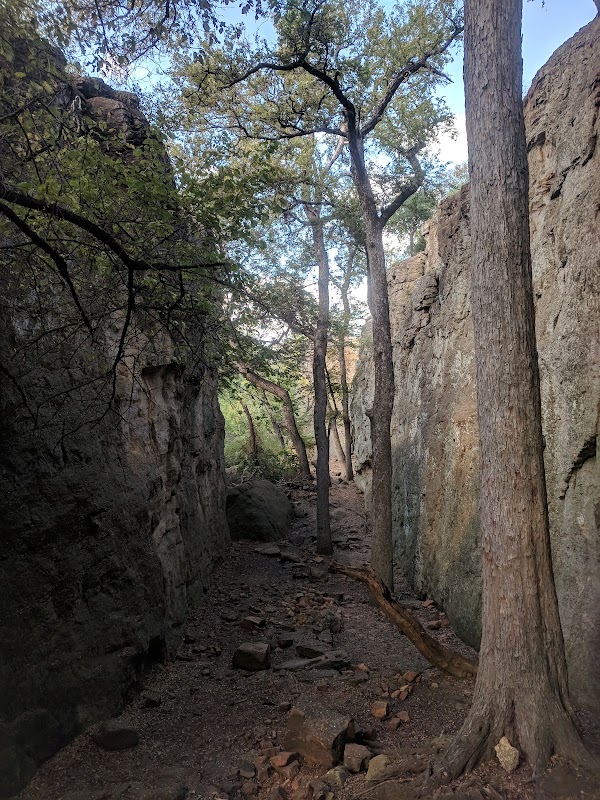
Lake Mineral Wells State Park Adventures
Lake Mineral Wells State Park offers a diverse outdoor recreation experience centered around a 640-acre lake, rugged sandstone formations, and extensive trails ideal for hiking, biking, and rock climbing.
About Lake Mineral Wells State Park

Located in Palo Pinto County, Texas, Lake Mineral Wells State Park encompasses over 3,300 acres featuring the scenic Lake Mineral Wells reservoir. The park is defined by its unique geological formations, including the famous Penitentiary Hollow, a natural rock amphitheater formed by sandstone cliffs known for rock climbing and bouldering. The park's ecosystem includes native oak, mesquite, and cedar trees, supporting local wildlife such as white-tailed deer, wild turkey, and a variety of bird species. Historically, the area served as a health resort in the early 1900s due to the mineral-rich waters of the lake. Visitors can enjoy a variety of recreational activities such as hiking on over 20 miles of trails, mountain biking on multi-use paths, fishing for largemouth bass and catfish, and camping at developed sites with modern amenities. The park also offers opportunities for kayaking and paddleboarding on the lake. Popular landmarks include the historic sandstone well house and various scenic overlooks providing panoramic views of the lake and surrounding hills. The combination of outdoor adventure, history, and natural beauty makes Lake Mineral Wells State Park a favored destination for families, adventure seekers, and nature enthusiasts throughout the year.
Highlights
Penitentiary Hollow, a renowned natural rock climbing amphitheater
Diverse habitat with opportunities for bird watching and wildlife viewing
The 640-acre Lake Mineral Wells for fishing, kayaking, and paddle sports
Historic sandstones and the original mineral well house landmark
Notable Natural Features
Penitentiary Hollow
A natural rock amphitheater framed by towering sandstone cliffs, known internationally for rock climbing and bouldering.
Lake Mineral Wells
A 640-acre freshwater reservoir offering fishing, boating, and water-based recreation in a scenic, quiet setting.
Historic Mineral Well House
Remnants of the park’s historic mineral water resort era, showcasing early 20th-century architecture and health tourism history.
